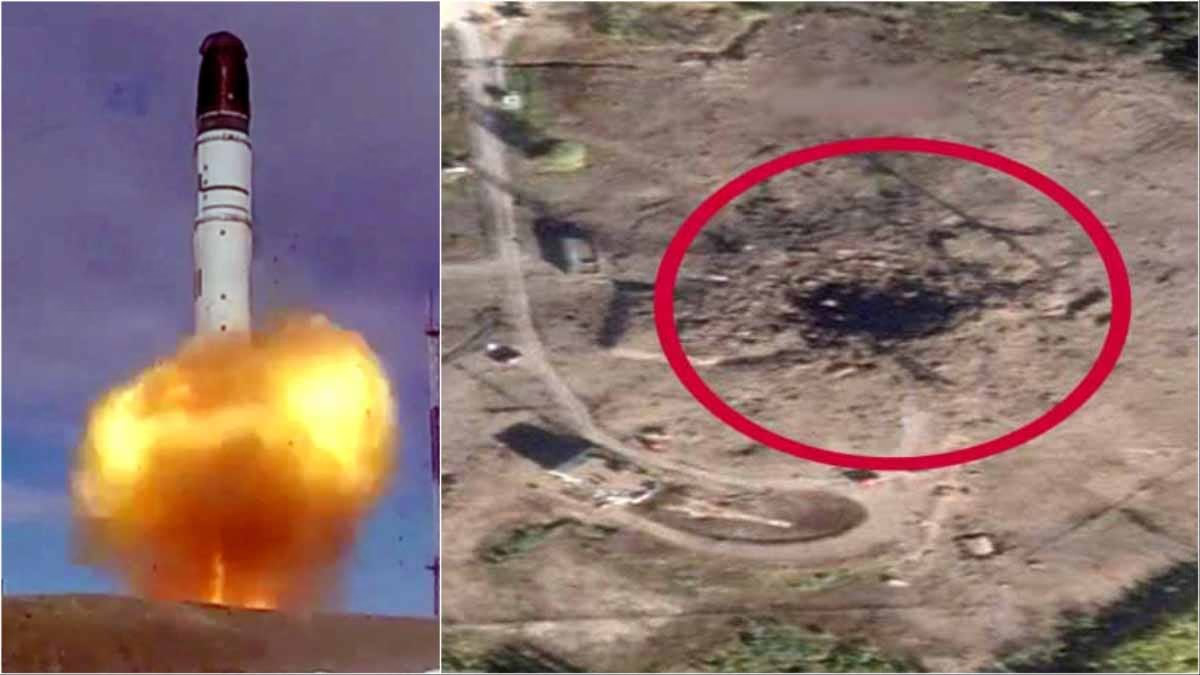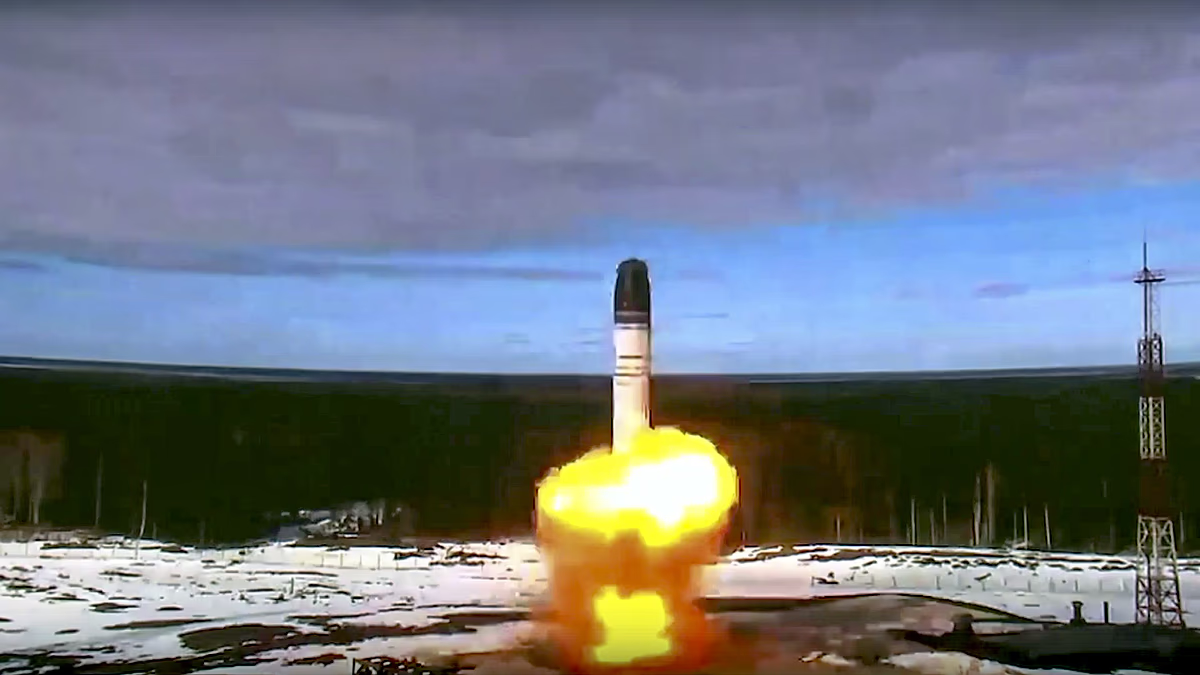
Source: aajtak
On September 21, 2024, Russia tested its most powerful nuclear missile, RS-18 Sarmat, at the Plesetsk Cosmodrome in the Arkhangelsk region. However, the missile exploded in its silo before launch.
(File photo: AP)
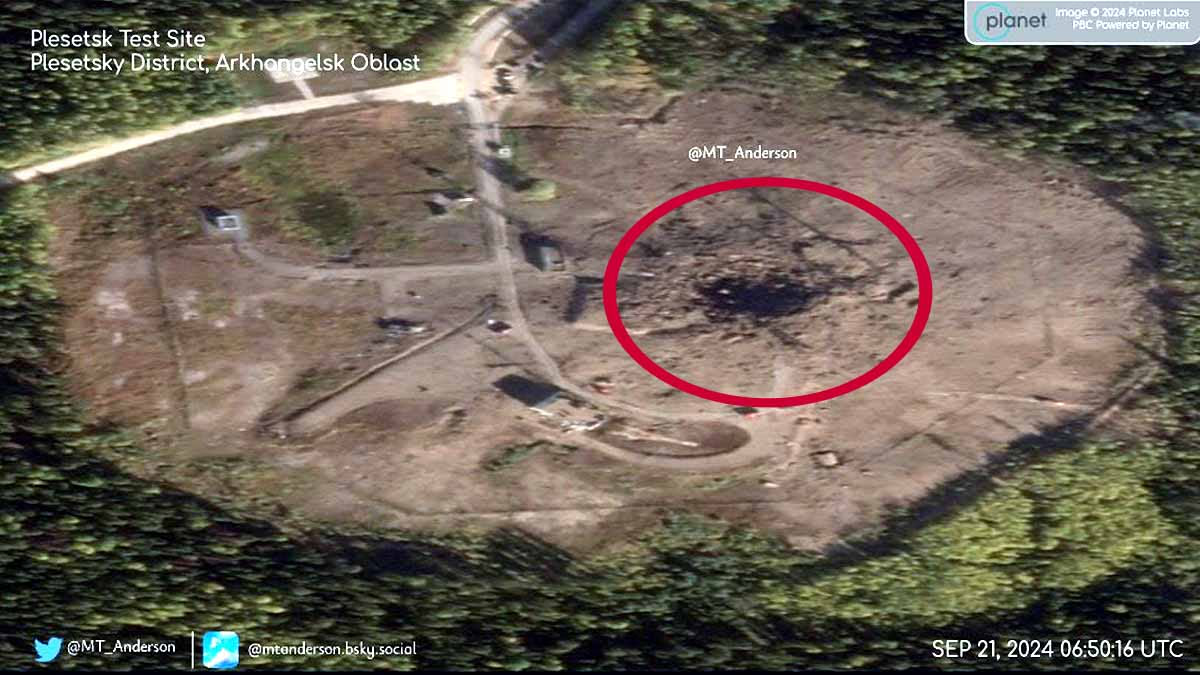
Source: aajtak
The silo, a cylindrical underground pit from which intercontinental ballistic missiles are launched, was destroyed. This was the missile’s fourth failed test, creating a significant crater at the test site.
(Photo: X/@MT_Anderson)
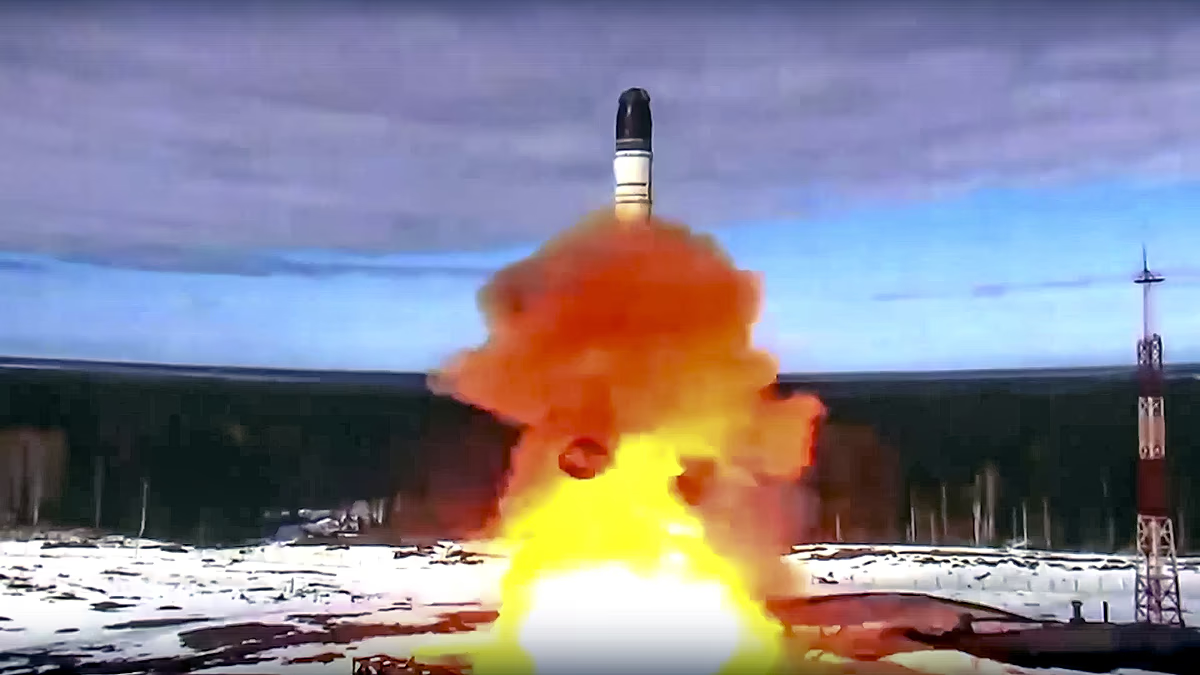
Source: aajtak
Despite the destruction of the silo and the test site, Russia asserts that its Satan-2 (Sarmat) missile is on combat alert. The Sarmat is known as the 'Second Satan.'
(File photo: AP)
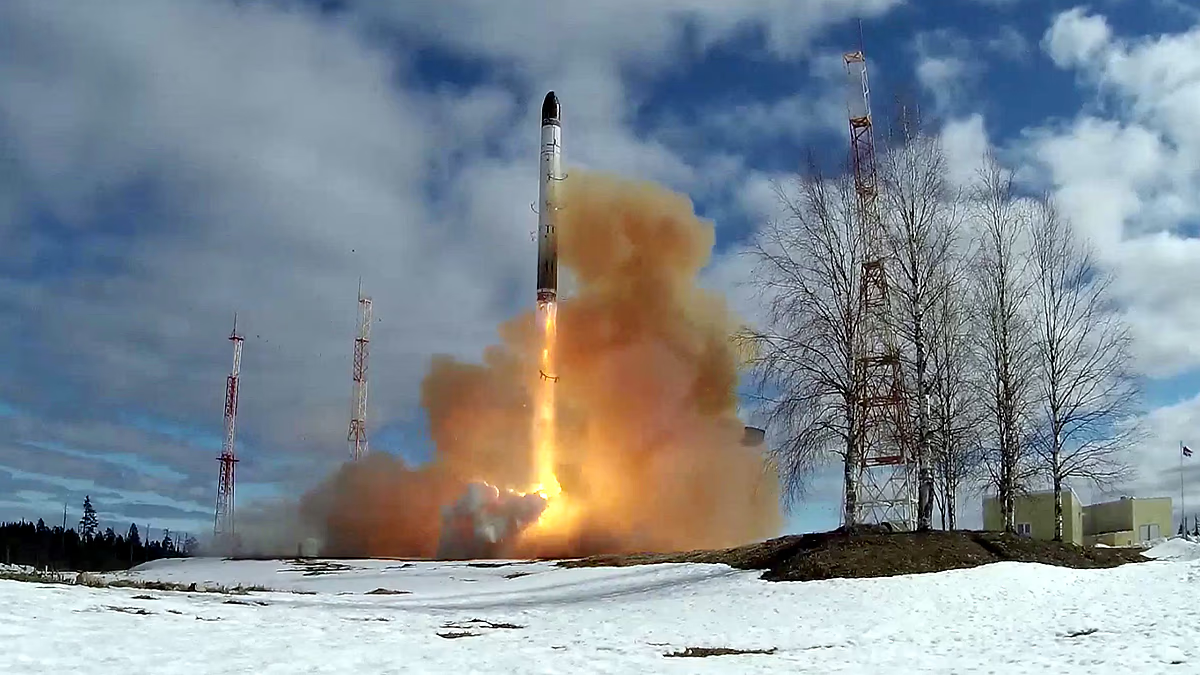
Source: aajtak
Designed to deceive anti-missile defense systems, this missile weighs over 2000 tons and can strike any corner of the world. The Sarmat ICBM is 35.5 meters long and 3 meters in diameter.
(File photo: Reuters)
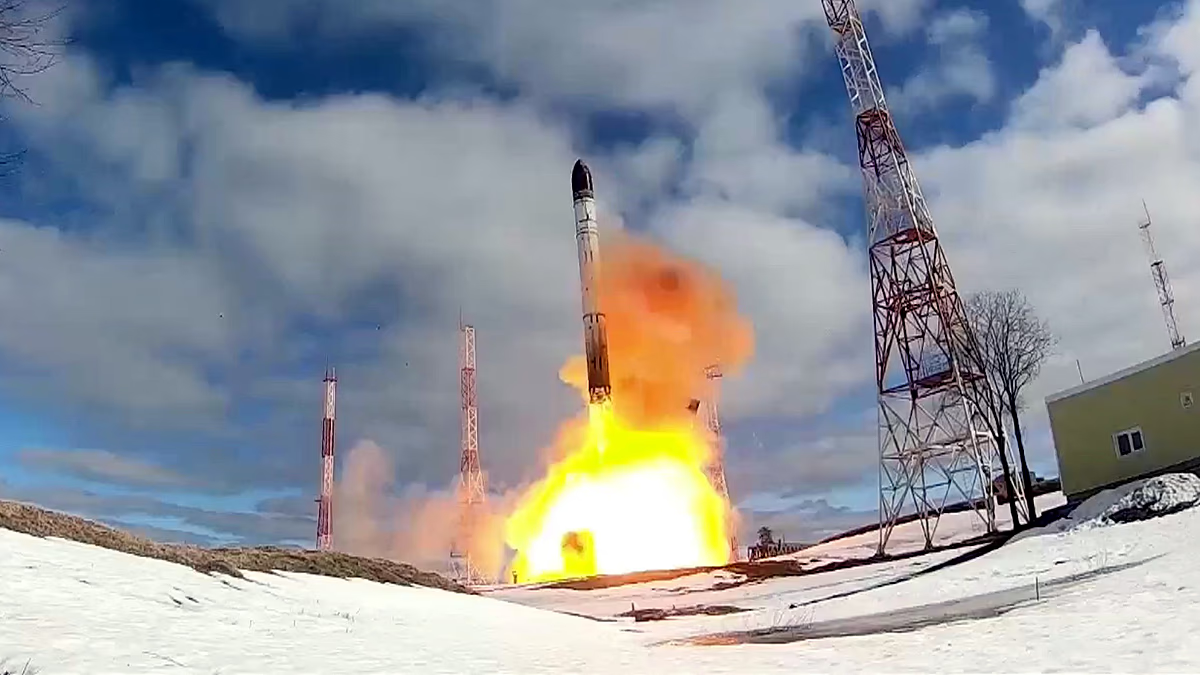
Source: aajtak
It can be equipped with 10 to 15 warheads, which may be either conventional or nuclear. This means the missile can target up to 15 locations simultaneously. It has a range of 18,000 kilometers.
(File photo: Reuters)

Source: aajtak
Even from within its borders, Russia can launch this missile to any part of the world. With a speed of Mach 20.7, equivalent to 25,560 km/hr, the missile can travel 7.1 km in just one second.
(File photo: Reuters)

Source: aajtak
The guidance system is based on Russia's GLONASS navigation system. Development began in 2009 to replace the 'First Satan,' the R-36M ICBM missile.
(File photo: Reuters)
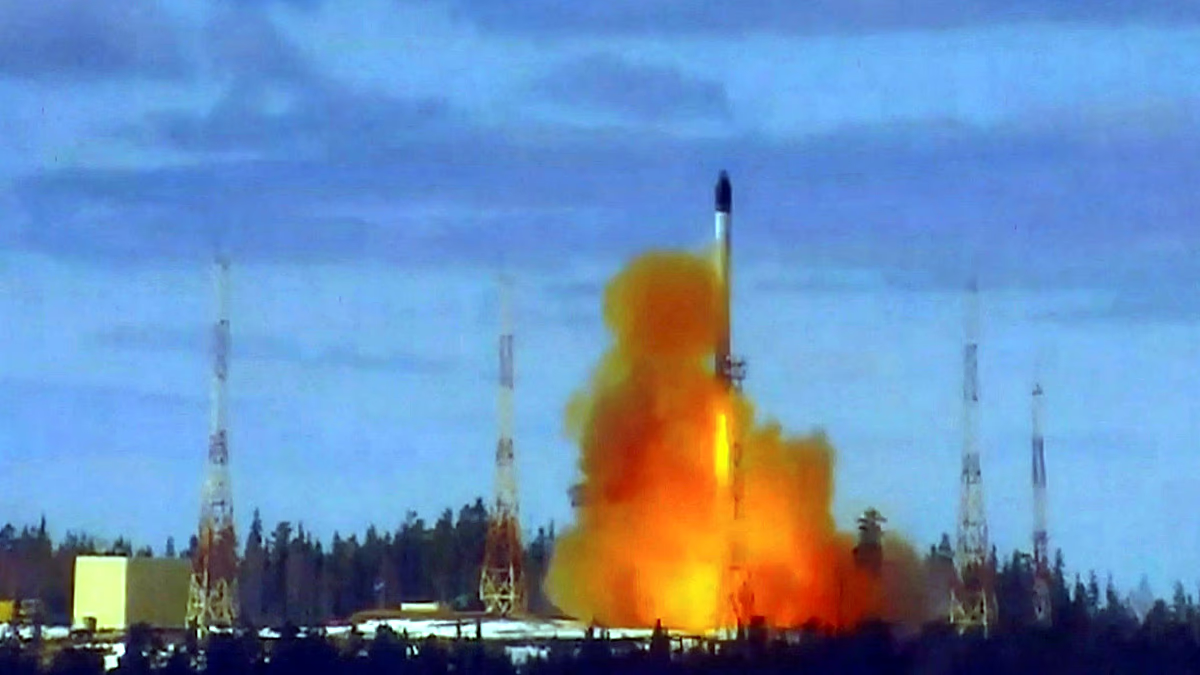
Source: aajtak
Russia first successfully tested this missile at the start of the Ukraine conflict. It was inducted into Russia's military by the end of 2022. Since then, four more tests have been conducted, all of which failed.
